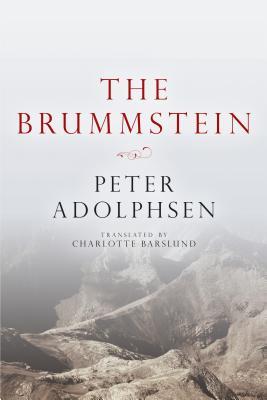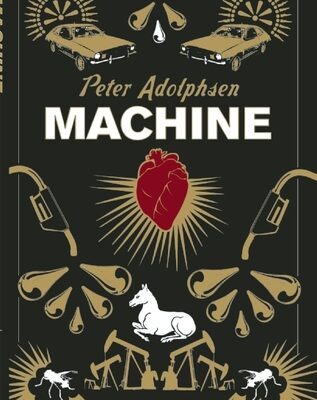Danish writer Peter Adolphsen‘s first work in English was his 2006 novel, Machine, which followed a drop of oil over the massive expanse of fifty-five million years, and somehow wrapped it all within ninety pages. The Brummstein, again translated by Charlotte Barslund, is an earlier novel, from 2003, though it came to English in 2011. It’s even shorter than Machine, but echoes elements of that book, showing that Adolphsen is a minimalist whose slim works seem preoccupied with vast periods of time.
It’s a feature of Adolphsen’s style – clinical, and laying on the science – that Barslund must be constantly pulling specialist dictionaries off the shelf when transforming his work. The opening passage – practically a geology lesson! – deals with “the constant orogeny of the Alps”, and discusses their creation in detail, attributing it to two tectonic events which, to exemplify the mind-bending timescales on show are put into a more conceivable perspective.
…if we apply the famous metaphor which depicts the Earth’s age as a calendar year, when dinosaurs became extinct on Boxing Day, and when, at the time of writing, ten seconds have passed since the Roman Empire’s five seconds expired, then these events took place on December 19 and 23 respectively.
On this more comprehensible scale, the novel is set over the last half of a geological second, but in reality it spans most of the twentieth century, following Germany through both world wars, the Cold War, and the fall of the Berlin Wall. Monumental times, indeed, but the wider aspects of these events are window dressing for a narrower approach, one that follows a chain of people as their lives intersect in a variety of ways.
This chain begins in the depths of the Hölloch (Hellhole), a large cave system in Switzerland where, in 1907, a Hollow Earth proponent (believing some truth in Bulwer-Lytton‘s The Coming Race) goes looking for an underground people and finds nothing but the unusual humming stone from which he takes a fragment and the book its untranslated title. Henceforth the crystal journeys through the possession of others, witnessing history and social change.
In the characters along the way, Adolphsen draws them lightly, peppering their stories with just enough details to suggest these people have lived in the wider world beyond the pages, such as avant-garde artist Ulrike who “lived alone, which was unintentional” or the elderly Georg, a retired ticket clerk now living in a railway lost and found.
It wasn’t until December 1943 that Georg finally overcame the inhibitions which had so far deterred him from helping himself to the lost items. He was driven by a noble motive: hunger.
Or Ferdinand, a young boy living feral toward the end of the war.
He wanted nothing to do with people; they would either kill him or abandon him by dying.
The characters however are not the point, they are just stations to be visited on the longer journey. The rock is ultimately a MacGuffin, used to show us people living through varied times, the world changing around them. The smaller lives’ events are a mix of tragedy and the absurd, such as when the universe dooms a character to death by chaise longue; a fate, admittedly, no less random than rocks “falling as a result of regolith” within the crystal’s cave.
Unfortunately The Brummstein‘s journey doesn’t match the destination, and Adolphsen signs off with an abrupt ending that isn’t overly satisfying. But that may well be his point; the book, at some level is meaningless. The crystal passes from hand to hand, just as generations come and go, and all those events, all the wars and inhumanity and impact of one century, are barely seismic against the sheer scale of time. It’s only a half a second in the grand, meaningless scale of things, no matter how much to us every second, especially the half we live within, counts.

